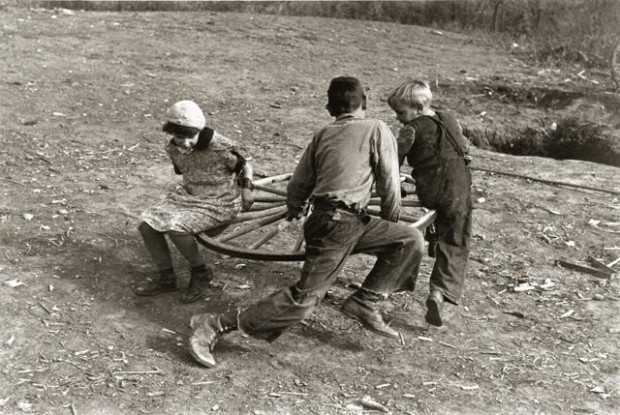Project Information
- When
- 2005

As children we discover magic in the simplest of things. Balls, blocks, jump ropes, hula-hoops, these mystical objects are nothing until they are animated by our imagination. They are the nucleus of our play, influencing how we interact with one another through their design. One can jump rope alone, or do Double Dutch with a group of friends. Blocks can form private citadels, a fort with friends, or specialize into a game of Dominos. A ball equally organizes a game of fetch and a World Cup match. In these sculptures I explored some of the ways we organize ourselves, and how sculpture can organize us. I was not playing the scientist, carefully studying the results of each exercise. I was the explorer, noisily splashing from one puddle to the next. Here we view the work as an individual… here we work as a group… over there is a community of individuals… and here is a mass event with multiple groups. These sculptures highlight specific associations from the multitude of possibilities.
As with toys, the interface strongly influences the interactions. A one year old will never be as enticed by an automobile as by a rubber ball. The interface is simply too complex to be apprehended and manipulated; the learning curve is too steep. Using this as my guide, I employed interface elements that would be familiar to people of many cultures from a young age. Swings, turnstiles, doors, hammocks, and handles. Each has a short learning curve, is immediately recognizable, and provides a foothold for entering the work.
These elements are then connected to a larger mechanism, offering to function for the viewers, who have the option to interact. “If you agree to participate I will do something.” This offer is implicit in many of the toys we play with. A tennis ball offers to bounce, and when it fails to comply we usually discard it. And so these mechanisms also fulfill their offer. They will all transmit energy from one place to another. However, each, like the toys they were inspired by, expends its energy on kinetic motion, and not on enacting permanent change. They whirl, sway, and spin but do not weave, drill, or drive.
Nothing is hidden in these sculptures, every bolt and pivot is there to be seen as one is invited to trace to linkages and discover the intricacies while participating. As a reward for participating, the sculptures move, sometimes in surprising ways, but there are no illusions in these pieces. In the construction of these sculptures, I was as interested in the process of transmission as in the end result. Physical connections and direct linkages were favored, while electronics and other ephemeral processes were specifically avoided. From the interface to the terminus one may watch the entire mechanism move as it translates ones own impetus into a final expression.
Soon the motion drones like a looping video instead of being punctuated by discrete events. In each piece, the participant has some ability to control this motion. In ChickensFeeding one may swing in a variety of ways, creating different acoustic and visual patterns, while Airplanes is almost entirely binary, on and off. Regardless of the degree of control available, all the sculptures are essentially static in their movement. Like a jump rope or a swing, they continue going up and down, round and round, or back and forth forever, so long as some one is participating. These spaces of static motion are devoid of narratives to structure ones experience; instead the rhythmic continuum becomes a landscape where viewers are left to their own imaginations as they explore.